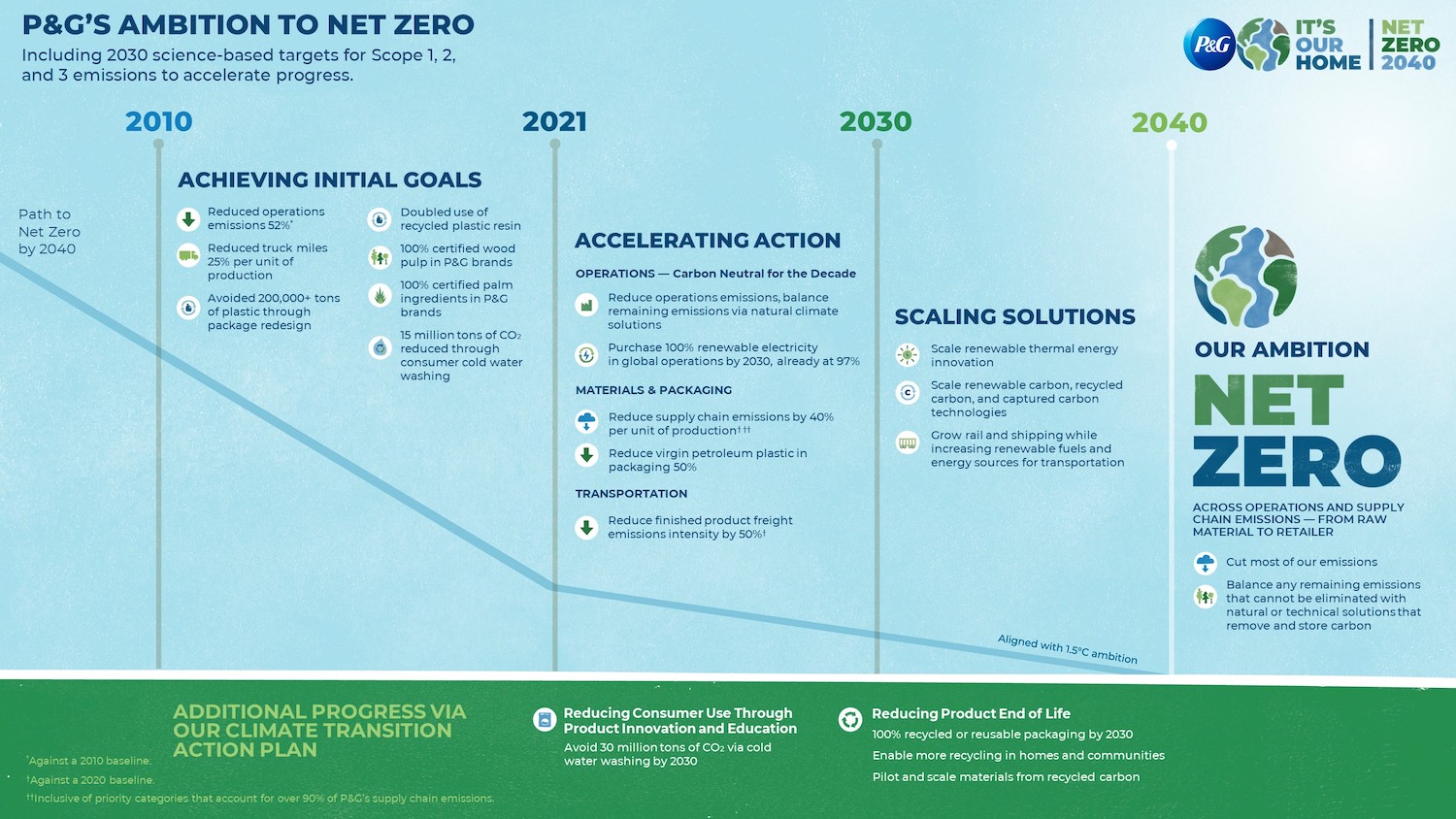
Over 15 years ago, I had an "aha" moment. The year was 2005 and I was leading marketing and innovation for Ariel, one of Procter & Gamble's largest brands, in Western Europe. That "aha" moment began by watching Al Gore’s film, "An Inconvenient Truth," and realizing the gravity of global warming.
At the same time, to help save my brand from declining in market share and relevance, I developed Ariel's Cool Clean or Turn to 30 initiative — which encouraged consumers to wash their clothes in cold water. While this campaign was very successful and increased market share, I made a discovery that would forever change my personal and professional calling. I learned that 80 percent of a detergent’s carbon footprint was related to the temperature of the wash cycle.
Suddenly it clicked: I realized it is possible to grow your business and decrease its footprint at the same time. Success and sustainability aren’t enemies, they’re allies. At that moment, I decided to make sustainability my job and an integral part of how we innovate, build our brands, and run the business at P&G. I pitched the idea to our CEO, he embraced it, and from there, I grew to become P&G’s first Chief Sustainability Officer.
I’ve made it my mission to embed sustainability into everything we do at P&G. We work diligently to ensure that sustainability is built in — not bolted on — to the way we design our products, manage our operations, build our brands, and, ultimately, engage our consumers.
This month, Procter & Gamble announced our expanded global climate ambition — to achieve net zero greenhouse gas emissions across our operations and supply chain by 2040. We have laid out our comprehensive plan to accelerate climate action in our first published Climate Transition Action Plan. This moment, over 10 years in the making, reaffirms P&G’s responsibility to be a force for good in society and the environment, while also being a force for growth in business. Our journey to net zero is informed by three prevailing convictions:
The climate crisis requires bold goals supported by credible, science-based actions
The most recent IPCC report shows us that in addition to making long-term systemic changes, we must act with urgency to avoid the worsening effects of climate change. While establishing a bold, long-term ambition is critical, we think it’s just as important to have clear, credible interim targets to ensure we are making meaningful progress this decade.
P&G has set several 2030 science-based targets to pace our progress toward zero by 2040. These goals include reducing emissions across our operations by 50 percent and our supply chain by 40 percent, which we’ll achieve by accelerating our use of renewable energy, advancing technologies to decarbonize our supply chain, and increasing the transportation efficiency of our finished products.

We may not have all the answers, but we cannot let uncertainty hold us back
In addition to achieving reductions with the tools available today, we need to innovate for the future. At both a company and brand level, we are working to create new systems and processes that produce superior products with a net zero emissions footprint.
For renewable thermal energy we have partnered with the World Wildlife Fund, manufacturers, and local governments to help create the Renewable Thermal Collaborative to identify and scale renewable, cost-competitive thermal energy solutions. We are also advancing low-carbon technologies, materials, and packaging to unlock new ways to decarbonize our supply chain. And exploring ingredients made from captured carbon dioxide which can create a potential fossil-free pathway for ingredient sourcing. Our Tide brand is working with Twelve, a Silicon Valley startup, to explore their carbon capture technology to incorporate CO2 from emissions into ingredients that could be used across Tide.

The future is collaboration
Reaching this ambition will require collaboration with partners across the public and private sectors and involve every aspect of our business. We are using our size and scale to make a collective impact, partnering with consumers to reduce GHG emissions from the use phase of products, creating alliances for carbon-efficient homes, and advocating for policy solutions to decarbonize energy infrastructure. We’ve also signed The Climate Pledge and joined the U.N.’s Race to Zeroinitiative via the Business Ambition for 1.5C, a partnerships that will help mobilize us and fellow signatories toward science-based action and accountability.
As I celebrate a decade in the greatest job on earth, I recognize that the nature of my role is evolving — from navigating intrapreneurial leadership to managing a mainstream business challenge. I hope that in another 10 years my job won’t exist anymore, as sustainability becomes an intrinsic part of every job. Until then, we have work to do. Hard work. We must drive regenerative and inclusive growth where all of us thrive in harmony with nature. While that is an ambitious goal, it doesn’t have to be complicated. Sometimes, it’s as simple as washing your clothes in cold water.
This article is sponsored by Procter & Gamble.
Image credits: Karsten Würth/Unsplash and P&G

With more than thirty years in brand management and innovation, Virginie has broad experience across multiple categories which has built her skills in global to local brand management. She has worked on several of P&G’s multi-billion dollar brands, including: Pantene, Ariel/Tide and Pampers. Virginie has extensive international experience, having been based in France, the United Kingdom, Switzerland and the United States. Today, Virginie serves as P&G’s Chief Sustainability Officer where her mission is to develop the company’s strategies and goals on sustainability and operationalize them across businesses and regions.














